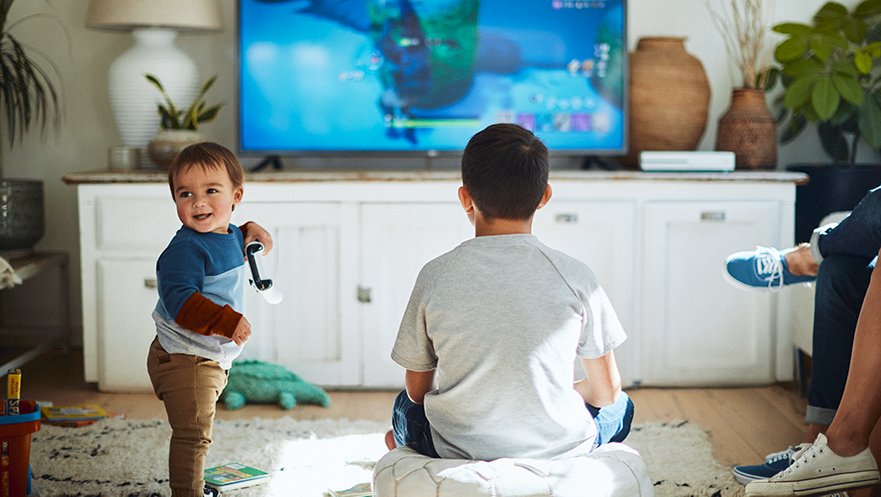As a kid, I remember thumbing through the printed TV listings that came with the Sunday paper to see what I didn’t want to miss that week. Back then, everything was appointment viewing — there was no DVR or on-demand.
We also had a Nintendo console, and I’m proud to say the hours I spent defeating castles in Super Mario Bros. have paid off. Even today, I can dodge Koopa Troopas and punch coin blocks with ease. My boys watch in awe. It feels good to be a cool mom, if even for just a few moments.

Kids today are living in a much different time. For them, screens are not only ubiquitous but necessary. Social distancing and distance learning have put screens between them and their teachers, classmates, friends and family. Online interaction has replaced physical connection — even more so while living in a pandemic where “normal” life, including their sports and activities, has been put on hold.
I won’t pretend that our family has it all figured out. We daily lament the screen overload, question how much is too much and sometimes arbitrarily throw out new parameters for our kids’ screen time. It’s a constant battle, and we aren’t alone in it.
That’s why I reached out to child psychologist Sarah Jerstad for help. She’s with Children’s Minnesota and has worked with kids and their families for 14 years. Sarah knows the struggle is real, and she knows how it can get better.
Does screen time apply to video games, phones and TV? If you’re watching a sitcom or sporting event on TV, is it different for the brain than watching videos or gaming?
Sarah: All of it is screen time, and there is limited research on what it does to the brain. The main thing is to determine if the activity is active or passive. When someone is just watching something, there is less learning or benefit than when they’re using the screen to be engaged with learning or do problem solving.
When can screen time be beneficial to a child?
Sarah: Right now, there are social benefits that are critical in the time of social distancing. Kids can gain critical thinking and problem-solving skills from playing video games, and you can do museum tours online, see sights like the Grand Canyon or the Taj Mahal, and learn many things (as we know from distance learning). One of the best ways to do this is join your child when possible. Play a game together, watch a show or tour a museum, and then talk about what you enjoyed and why. Even babies show more brain activity when their parents “read” a screen story with them than when babies look at it on their own.
Are there certain times of day when screen time should be avoided?
Sarah: Any time it interferes with something the child should be doing, like schoolwork, chores or physical activity, and also for about an hour before bed. At night, it’s actually more about limiting the screen light. Just as you wouldn’t have a child run around right before bed, a brain stimulated from screens won’t be as tired, either.
What are some signs that a child has had too much screen time?
Sarah: The main thing is when they are not getting enough physical activity or other important things done. But there are emotional cues, too, like if your child’s depression is only relieved by playing games, they’re using screens to avoid other tasks, or they have significant aggression or rage when it’s time to turn the screens off. In these cases, talking to your primary care provider is a good start toward getting support.
Should we go cold turkey or ease off the screen time slowly?
Sarah: I would rarely say to take it all away. There’s a time for that, but I think it’s more about helping teach the child how to create limits and earn the privilege. Those extreme actions of cutting it all off don’t ultimately help. We are all living with screens right now.
What’s your advice to parents like me who suspect their children have had too much screen time?
Sarah: Identify the “musts” for screens — things that cannot be done without them, such as schoolwork or connecting with friends and family — and distinguish those times from when screens are used for movies, games and social apps. Allow more of the “musts” while still having some time for other uses. Another way to balance is to have screen breaks during the day. For example, after completing schoolwork, have a screen-free lunch and some outdoor time, followed by another chunk of screen time.
Along with setting limits, set expectations, be consistent and follow through. Sure, kids will try to negotiate, but setting up structure always helps because it gives you something to anchor in.
Click here for tips on how to keep your kids safe online and here for ways to engage your kids with STEM activities at home.


